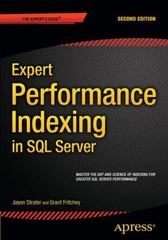Answered step by step
Verified Expert Solution
Question
1 Approved Answer
STORYBOARD: MAP Next, begin developing a main function in your code. The main function will contain the overall gameplay functionality. Review the Project Two Sample
STORYBOARD: MAP Next, begin developing a main function in your code. The main function will contain the overall gameplay functionality. Review the Project
Two Sample Text Game Flowchart, located in the Supporting Materials section, to help you visualize how main will work.
For this step, simply add in a line of code to define your main function, and a line at the end of your code that will run main You will
develop each of the pieces for main in Steps #
In main create a dictionary linking rooms to one another and linking items to their corresponding rooms. The game needs to store all of
the possible moves per room and the item in each room in order to properly validate player commands input This will allow the player
only to move between rooms that are linked or retrieve the correct item from a room. Use your storyboard and map from Project One to
help you create your dictionary.
Here is an example of a dictionary for a few of the rooms from the sample dragon text game.
#A dictionary linking a room to other rooms
#and linking one item for each room except the Start room Great Hall and the room containing the villain
rooms
'Great Hall' : 'South' : 'Bedroom', 'North': 'Dungeon', 'East' : 'Kitchen', 'West' : 'Library'
'Bedroom' : 'North' : 'Great Hall', 'East' : 'Cellar', 'item' : 'Armor'
'Cellar' : 'West' : 'Bedroom', 'item' : 'Helmet'
'Dining Room' : 'South' : 'Kitchen', 'item' : 'Dragon' #villain
#The same pattern would be used for the remaining rooms on the map.
The bulk of the main function should include a loop for the gameplay. In your gameplay loop, develop calls to the functions that show the
player's status and possible commands. You developed these in Step # When called, the functions should display the player's current
room and prompt the player for input their next command The player should enter a command to either move between rooms or to get
an item, if one exists, from a room.
Here is a sample status from the dragon text game:
You are in the Dungeon
Inventory:
You see a Sword Directions
In Project One, you designed pseudocode or flowcharts for the two main actions in the game: moving between rooms and gathering items. In
this project, you will write the code for the full game based on your designs. You will also need to include some additional components beyond
your original designs to help your game work as intended. You will develop all of your code in one Python PY file, titled
TextBasedGame.py
IMPORTANT: The directions include sample code from the dragonthemed game. Be sure to modify any sample code so that it fits the theme of
yourgame.
First, create a new file in the PyCharm integrated development environment IDE title it
TextBasedGame.py and include a comment at
the top with your full name. As you develop your code, remember that you must use industry standard best practices including inline
comments and appropriate naming conventions to enhance the readability and maintainability of the code.
In order for a player to navigate your game, you will need to develop a function or functions using Python script. Your function or functions
should do the following:
Show the player the different commands they can enter such as go North", go West", and "get item Name
Show the player's status by identifying the room they are currently in showing a list of their inventory of items, and displaying the item
in their current room.
You could make these separate functions or part of a single function, depending on how you prefer to organize your code.
#Sample function showing the goal of the game and move commands
def showinstructions:
#print a main menu and the commands
printDragon Text Adventure Game"
printCollect items to win the game, or be eaten by the dragon."
printMove commands: go South, go North, go East, go West"
printAdd to Inventory: get 'item name'"
#In this solution, the player's status would be shown in a separate function.
#You may organize your functions differently. necessary adjustments, and finish developing the code for the gameplay loop.
Within the gameplay loop, you should include decision branching to handle different commands and control the program flow. This should
tell the game what to do for each of the possible commands inputs from the player. Use your pseudocode or flowcharts from Project One
to help you write this code.
We room?If the player loses the game, they will see the following output:
NGAME OVER!
Thank

Step by Step Solution
There are 3 Steps involved in it
Step: 1

Get Instant Access to Expert-Tailored Solutions
See step-by-step solutions with expert insights and AI powered tools for academic success
Step: 2

Step: 3

Ace Your Homework with AI
Get the answers you need in no time with our AI-driven, step-by-step assistance
Get Started


